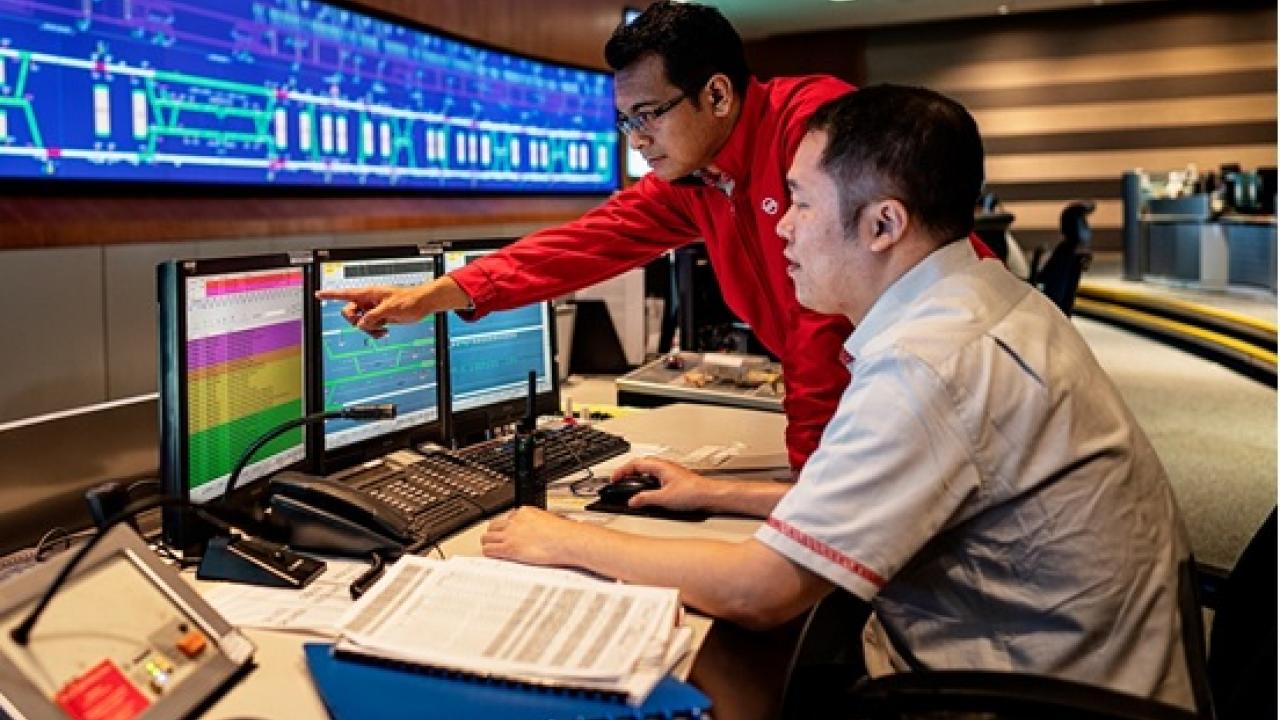Tuesday, April 21, 2020
The Centralised Traffic Control Simulator (CTC), a step beyond collaborative training
Rail traffic is coordinated across a huge network in which hundreds of trains cross tracks and arrive at and depart from stations. Many of us have wondered at some point: How do they do it to manage and control all trains operating on our tracks?
Many professionals ensure this complex mechanism is running from different places and they make every effort to ensure that incidents have a minimal impact on rail operations. These tasks are carried out from the different Centralised Traffic Control (CTC) centres that control and coordinate all operations.
Professionals responsible for traffic control operations are trained according to the complexity of their tasks and the different skills required, such as, for example, being capable of working under stress or having good communication skills. To this end, there is a growing number of rail operators who can now use technological tools to help expand the training capacity for this group.
In this regard, SMRT, an operator from Singapore, installed in February this year one of the most complex and ambitious CTC simulator systems. This is due to the level of automation of the operation, i.e., a driverless system with CBTC, among other aspects. In addition, its CTC has 17 different traffic control profiles. This means that there are 17 types of CTC workstations with different capacities to manage traffic and other variables. Some CTC workstations supervise a broader section of the network and others are smaller control panels, such as those used for stations.
SMRT can create, execute and control the exercises launched to the CTC simulator through the simulator's Instruction Workstation. The instructor can perform the following actions, among others: establish the CTC profile, insert the time grid and determine the simulation scenario. To achieve this, the instructor can control the number of passengers in stations and add real events, such as a signal problem, trains not stopping at stations, etc.
Therefore, these professionals can be trained in real scenarios, in which delays, breakdowns and many other factors force CTC operators to act on trains and lines with the greatest possible speed and accuracy.
Training with simulators for Control Stations does not end here. To increase the degree of realism, there is a key factor that has been addressed in this project for the first time in the history of simulation. Collaborative training between the different CTCs and between the CTC and line operators.
Numerous studies shed light to the complexity of collaborative work of these professionals and show how individual tasks are coordinated consistently with the actions of other professionals. All professionals working in the operation generate information that other professionals need. In such a complex environment, collaboration, synchronisation and coordination of activities are vital to guarantee safe and efficient operations.
After months of intense work, SMRT now has a training room for all CTC controllers, in which they can all be trained on the same environment, including training for train drivers, using the driving simulators that have also been developed. In such a complex scenario, communication has been a key factor, due to its importance during training.
LANDER trusts that this new technology will continue to improve rail operator training across the world, help improve safety for passengers and ensure optimum performance and operation of the system.

